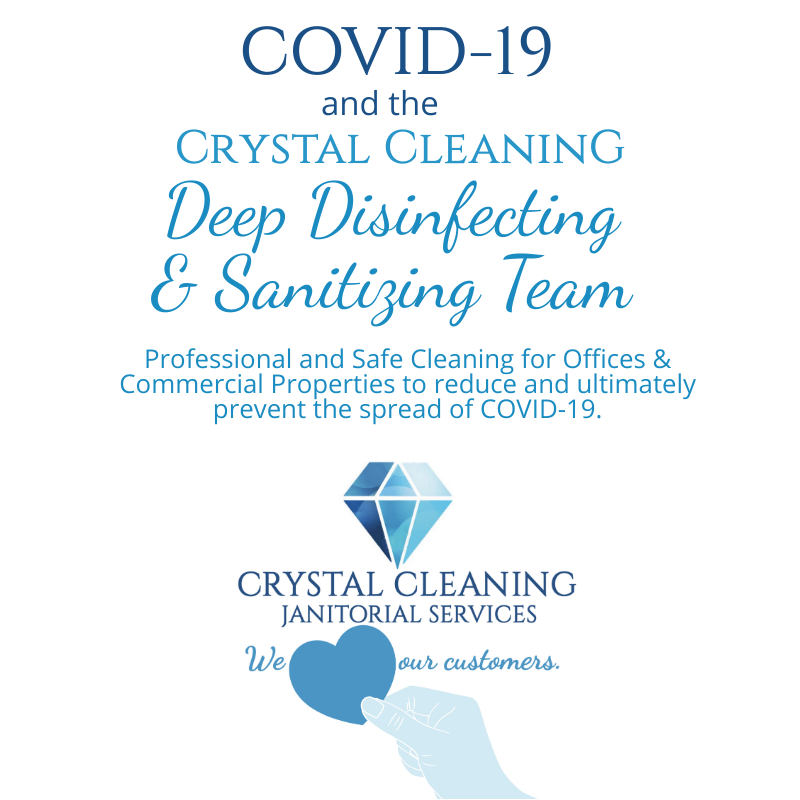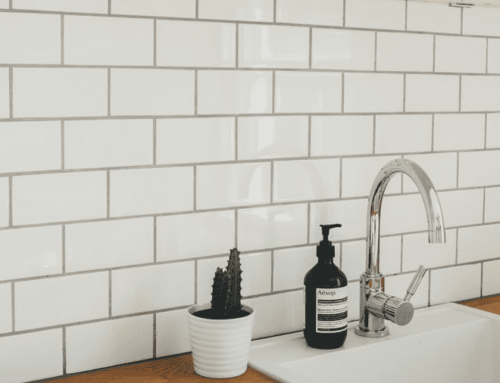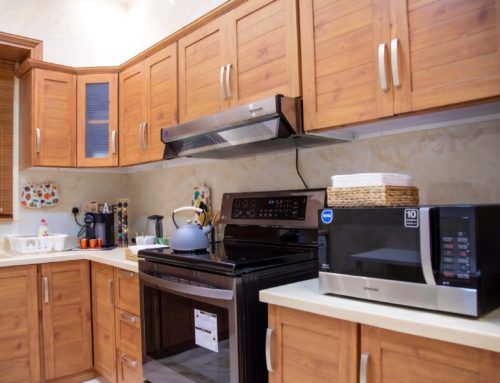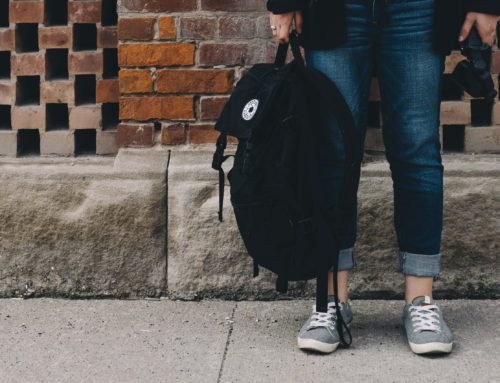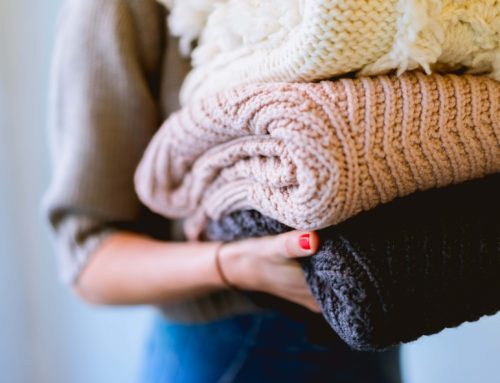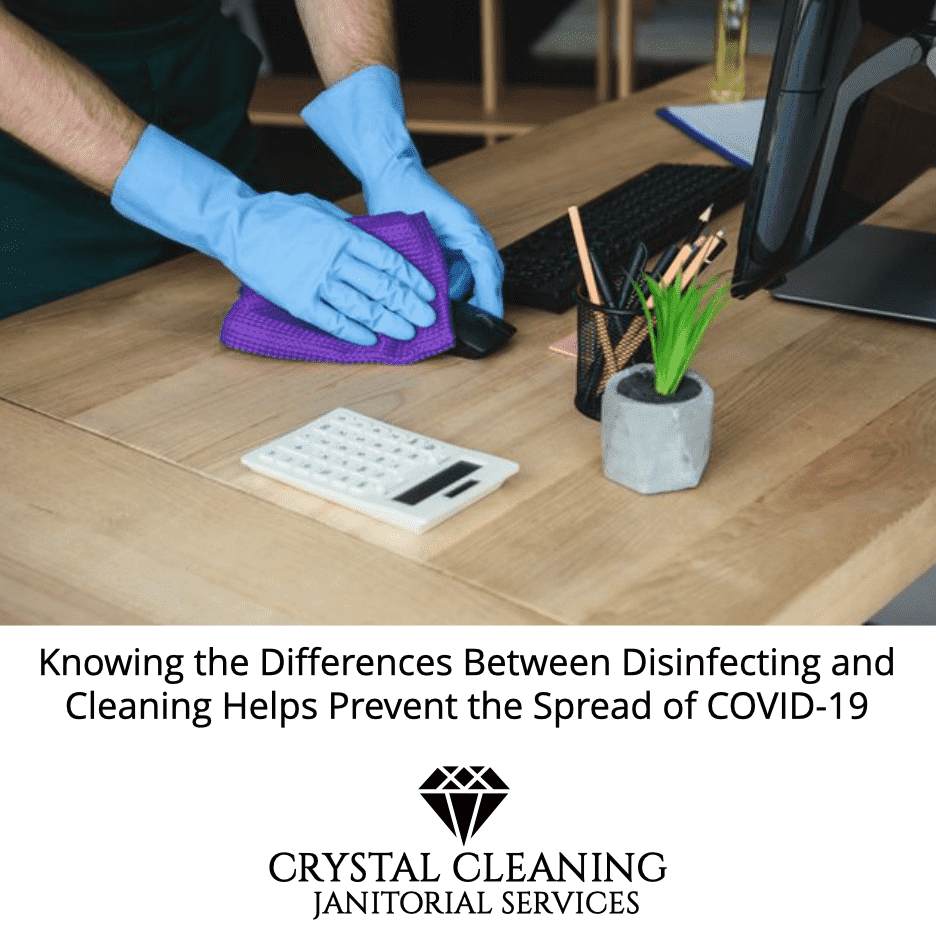
As COVID-19 sweeps through the country, businesses must be thinking about a strategy to keep their office buildings, banks, apartment complexes, or restaurants thoroughly cleaned and safe for employees and customers. Therefore, it’s essential to know the differences between disinfecting and cleaning.
There is a silver lining!
The Crystal Cleaning COVID-19 Deep Disinfecting & Sanitizing Team‘s mission is to provide the safest and highest quality janitorial services to help reduce and ultimately stop the spread of COVID-19 in Pinellas County and Hillsborough County, Florida.
Our cleaning company follows all CDC regulations regarding social distancing and protective gear. Our worker’s health and the safety of your business is our number one priority. Therefore, we always wear gloves, safety masks, and, when necessary, attire that protects you and us from the virus and other toxins.
We offer FREE quotes to any business interested in our disinfecting services. As part of this service, we will survey your grounds, and provide you with the most reasonable rate.
But first, what are the differences between a disinfecting and cleaning?
Cleaning is not disinfecting. Disinfecting is not just sanitizing. There is a big difference between these terms. It is now, more than ever, necessary to know the differences between disinfecting and cleaning to prevent the spread of COVID-19.
Disinfecting and Cleaning 101: Definitions
CLEANING
To make something free of dirt, dust, marks, or filth, especially by washing, wiping, or brushing.
CLEANING PRODUCTS
Products used for the routine cleaning of an indoor built environment. They include but are not limited to glass cleaners, general-purpose cleaners, floor cleaners, laundry detergents, dishwashing detergents, deodorizers, hand soaps, and wax strippers.
DISINFECTING
To clean something to destroy disease-carrying microorganisms, pathogens, and bacteria and thus prevent infection.
DISINFECTANT
An agent that destroys, neutralizes or inhibits the growth of disease-carrying microorganisms. (e.g., bactericide, fungicide, virucide.)
SANITIZING
To make something clean and healthy, especially by killing bacteria.
SANITIZER
An antimicrobial agent that kills or renders inactive 99.9% of all known bacteria, viruses, and fungi that are present on a surface.
Disinfecting VS Cleaning
Now that you have definitions of cleaning, disinfecting, and sanitizing, it’s important to take a look at how they differ in detail.
Cleaning with household cleaners typically removes dirt and grime from a surface. It makes things look shiny and clean, but they do remove the pathogens that can cause illness. Sanitizers and disinfectants, on the other hand, reduce or remove most bacteria and viruses on a surface.
Clean then Disinfect/Sanitize
By itself, a general-purpose cleaner won’t eliminate bacteria or viruses, but you should always start here. After you properly clean the surface, you must decide to sanitize or disinfect or both. Before disinfecting and sanitizing, start with a general-purpose cleaner. Before sanitizing or applying a disinfectant, the surface should always be clear of dirt and debris
Sanitizers reduce microorganisms on a surface to a level considered safe by public health standards, which is 99.9 percent within 30 seconds. A disinfectant kills nearly 100 percent (99.999 percent) of bacteria, viruses, and fungi on a surface in a five to ten minute period.
Disinfecting Various Work Spaces
If a surface is spotless, you usually only need to disinfect high-touch or high-germ exposure areas. However, if you work in the healthcare or hospital setting, it’s vital to disinfect critical areas where there are bodily fluids or blood present. Other areas, where specific medical procedures can lead to a higher risk of infection, should also be disinfected.
Janitorial services, like Crystal Cleaning, can apply a general-purpose cleaner 90% of the time for high-touch surfaces, restroom floors. However, at a time like this, we will sanitize and disinfect all areas of your space to prevent the spread of COVID-19.
In restaurants, sanitizers are sufficient to clean dishes and utensils, as well as tables and surfaces. Sanitizers kill bacteria quickly and effectively so that surfaces and tableware are ready for repeated use.
Where building occupants are more vulnerable to germs, there will be a greater need for disinfecting, such as in healthcare, education settings, or apartment buildings.
Those working in office buildings will still find it useful to disinfect high-touch surfaces, such as elevator buttons, door handles, and toilet flush handles. Disinfect areas where occupants come in direct contact with a surface, such as a shower floor in a gym.
Are you in need of a coronavirus cleaning?
Contact us today for a FREE estimate. We are here to help you and your business stay safe during this critical time!
